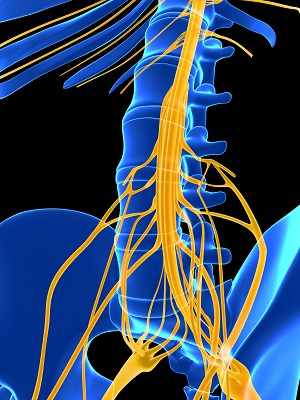20 Feb Learning Cause and Effect
 Sparks of Kinesthesia
Sparks of Kinesthesia
When does a person begin to learn about the relationships between things that happen? Does the brain have an innate capacity to make the connections necessary to associate outcomes with catalysts? At what point does a person begin to learn that she or he can affect outcomes in the real world?
One day when mom is reclining on the couch after a busy morning, Yorrick feels himself kicking. Mom feels it, too. Yorrick cannot identify the locus of the action in his body, but it feels somehow closer to him than any of the other tactile, audio or motion sensations with which he is familiar. This sensation of his own motion is the first introspective sensation he has ever registered. Though his sense of SELF will require a long time to take meaningful shape, it is likely to be built on the basis of these amorphous patterns of perception that constitute the kinesthesia of his in-utero consciousness.
| Understanding Context Cross-Reference |
|---|
| Click on these Links to other posts and glossary/bibliography references |
|
|
|
| Prior Post | Next Post |
| Dichotomy vs. Continuum | Pattern Recognition in Two Dimensions |
| Definitions | References |
| kinesthesia emotion | Valiant: Circuits of the Mind |
| cue response | Thorndyke: Schemata |
| learning experience | Menyuk: Language Acquisition |
 Some of the most profound sensations to which humans are subject are kinesthetic. Internal pains can be debilitating and internal pleasures elating. Tactile sensations are a profound motivating force in our lives, and our emotional responses are often linked to tactile perception. Kinesthesia is a core component of sensitivity – consider your own motivations if you doubt that statement! Kinesthetic stimuli cue us to eat, sleep, scratch, cough, sneeze, relieve ourselves, move around, relax, seek medical care, and seek sexual attention, as well as prevent us from staying outside (or up north) when it is too cold outside, exercising too much and doing other things that pain us. The body talks to us through the peripheral nervous system, and we listen.
Some of the most profound sensations to which humans are subject are kinesthetic. Internal pains can be debilitating and internal pleasures elating. Tactile sensations are a profound motivating force in our lives, and our emotional responses are often linked to tactile perception. Kinesthesia is a core component of sensitivity – consider your own motivations if you doubt that statement! Kinesthetic stimuli cue us to eat, sleep, scratch, cough, sneeze, relieve ourselves, move around, relax, seek medical care, and seek sexual attention, as well as prevent us from staying outside (or up north) when it is too cold outside, exercising too much and doing other things that pain us. The body talks to us through the peripheral nervous system, and we listen.
If kinesthesia plays a central role in motivating adults, then why not look at it from the perspective of a child or infant? Kinesthesia is one of the most powerful things an infant possesses. This power within to sense and respond must be central to learning, because it provides the cues and framework for learning about the world outside and the self inside. It provides an ultimately self-centered concept of the world which will serve Yorrick throughout his life both in his physical learning and acting as well as his mental learning and abstract reasoning. No matter how enlightened Yorrick becomes, he will always look out at the world.
Seeds of Cause & Effect
When Yorrick first experiences pain, perhaps in association with birth or early postpartum stimuli, the new conscious phenomenon is quite jarring and induces a reflex response of crying. The crying reflex is triggered by some form of distress. This distress may be the result of a newly perceived signal from the belly caused by hunger. With the termination of the umbilical food source, a new digestive system kicks in. Because of the sucking reflex and a smart mom, Yorrick gets nourishment in the form of mama’s milk (or a bottle filled with some scientifically justified fake, as is practiced in some less humane societies).
The sequence of events shown below repeats itself a few times. Soon, Yorrick gets it down pat. He is beginning to learn the extremely abstract concept of cause and effect, and developing a schema for future learning. This basic application of the principles of cause and effect is loosely understood by most members of the animal kingdom, and they are able to exercise this knowledge to satisfy their survival instinct. Yorrick, on the other hand, is capable of expanding these primitive concepts so that they will serve as the basis for extremely complex abstract learning.
Motivational Phenomena
A basic component of Yorrick’s learning to understand the world is associated with feeling good versus feeling bad. These feelings hinge upon the interaction of chemicals, including digestive fluids and molecules producing electrical impulses, and, to a lesser degree, hormones that interact with each of his bodily systems. Gastric fluids, those that give him hunger cues then assist in the digestion process, are some of the basic components of Yorrick’s concept of feeling good and feeling bad. To attempt to divorce these chemical components from the conscious phenomena that they trigger and serve will not help in creating complete and accurate models.
 The aggregate picture of Yorrick’s perceptions of the world around him and the world within him constitute his conscious repertoire. Because Yorrick has spent several months in-utero learning about motion, touch and sound, he comes into the world with a foundation for learning at a more rapid pace, along with a vague concept of what is good. This concept centers around mom and is naturally reinforced when mom does nice things, like feeding him. Yorrick’s concept of good can probably be shattered if mom does bad things like withholding necessities such as nourishment or the security of close physical contact.
The aggregate picture of Yorrick’s perceptions of the world around him and the world within him constitute his conscious repertoire. Because Yorrick has spent several months in-utero learning about motion, touch and sound, he comes into the world with a foundation for learning at a more rapid pace, along with a vague concept of what is good. This concept centers around mom and is naturally reinforced when mom does nice things, like feeding him. Yorrick’s concept of good can probably be shattered if mom does bad things like withholding necessities such as nourishment or the security of close physical contact.
In addition to neurotransmitter chemicals that support spreading activation, chemicals that contribute to other physical processes (such as the charge of adrenaline or hormonal activation of emotional responses) are an important component of the self that is capable of thinking. Both the chemicals and the biological components they support are important pieces of a complete model of knowledge acquisition, especially in learning cause and effect.
| Click below to look in each Understanding Context section |
|---|










